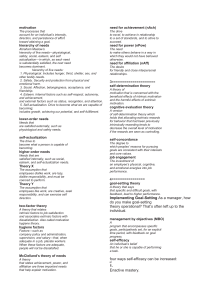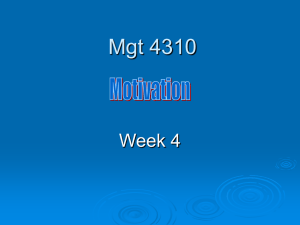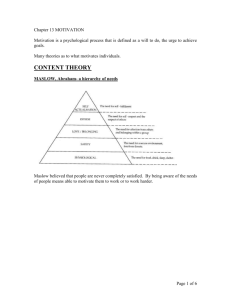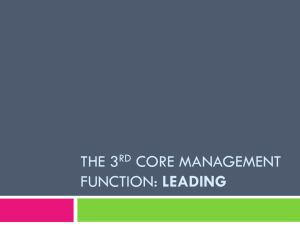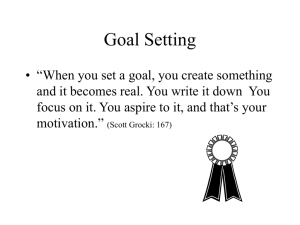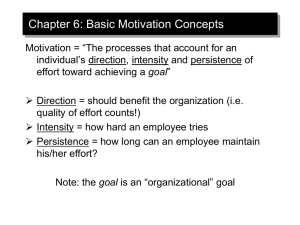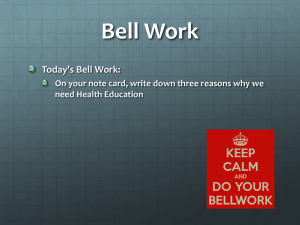Human Resource Management
advertisement
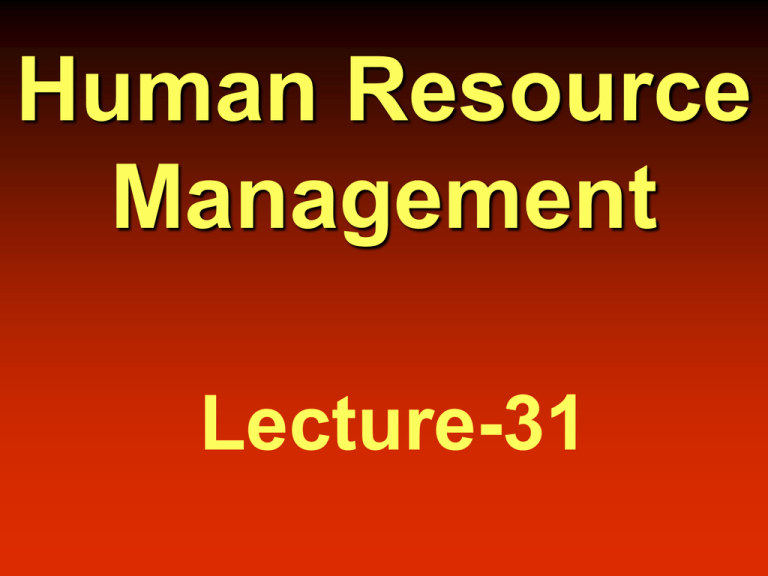
Human Resource Management Lecture-31 Motivation The inner drive that directs a person’s behavior toward goals. Need More money for unexpected medical expenses Goal-directed behavior Ask for a raise Work harder to gain a promotion Look for a higher-paying job Steal Need Satisfaction More money NEEDS BEHAVIOUR INCENTIVES AND GOALS Direction Intensity Persistence Determinants of Job Performance Willingness to perform Job performance Capacity to perform Opportunity to perform Performance Formula Performance = f (ability X motivation X opportunity) Ability = individual’s knowledge, skills, and ability to accomplish task Motivation = level of individual energy for the task Opportunity = right performance opportunity Why Do We Care? Ability PERFORMANCE Motivation Opportunity Performance = f (Ability, Motivation, Opportunity) 14.8 SelfActualization Esteem Affiliation Security Physiological Need for Achievement (nAch) Need for Power (nPow) Need for Affiliation (nAff) McClelland’s Theory of Needs Alderfer’s ERG Theory Existence Growth Relatedness McGregor’s Theory-X and Theory-Y Theory X Management view that assumes workers generally dislike work and must be forced to do their jobs. Theory Y Management view that assumes workers like to work and under proper conditions, employees will seek responsibility to satisfy social, esteem, and self-actualization needs. Little Ambition Theory X Workers Dislike Work Avoid Responsibility Self-Directed Theory Y Workers Enjoy Work Accept Responsibility Effective goal setting Specific Relevant Challenging Commitment Participation Rewarding Task effort Task performance Expectancy Theory of Motivation E-to-P Expectancy P-to-O Expectancy Outcomes Outcome 1 + or - Effort Performance Outcome 2 + or - Outcome 3 + or - What I put in What I get back Equity Theory Can I get it? Do I want it? Expectancy Theory Reinforcement Theory Rewards Consequences No Rewards Punishment Behavior Self-actualization needs (self-development, realization) Esteem needs (self-esteem, recognition, status) Social needs (sense of belonging, love) Safety needs (security, protection) Physiological needs (hunger, thirst) Three Approaches to Motivation 14.2 Individual Differences Approach Treats motivation as a characteristic of the individual Motivation Job & Organization Approach Emphasizes the design of jobs and the general organizational environment Managerial Approach Focuses on behaviors of managers, in particular, their use of goals and rewards When someone says, “It’s not the money, it’s the principle, it’s the money! -- Anonymous Challenging Jobs Equitable Rewards Supportive Colleagues Good Work Environment Challenges of motivating employees Changing workforce –younger generation employees have different needs and expectations to senior workers –people have more diverse values – results in more variety in what motivates employees Cultural values –globalisation has added to diversity Motivating Professionals Provide challenging projects. Allow them the autonomy to be productive. Reward with educational opportunities. Reward with recognition. Express interest in what they are doing. Provide flexible work, leave, and pay schedules. Provide child and elder care benefits. Structure working relationships to account for cultural differences and similarities.




